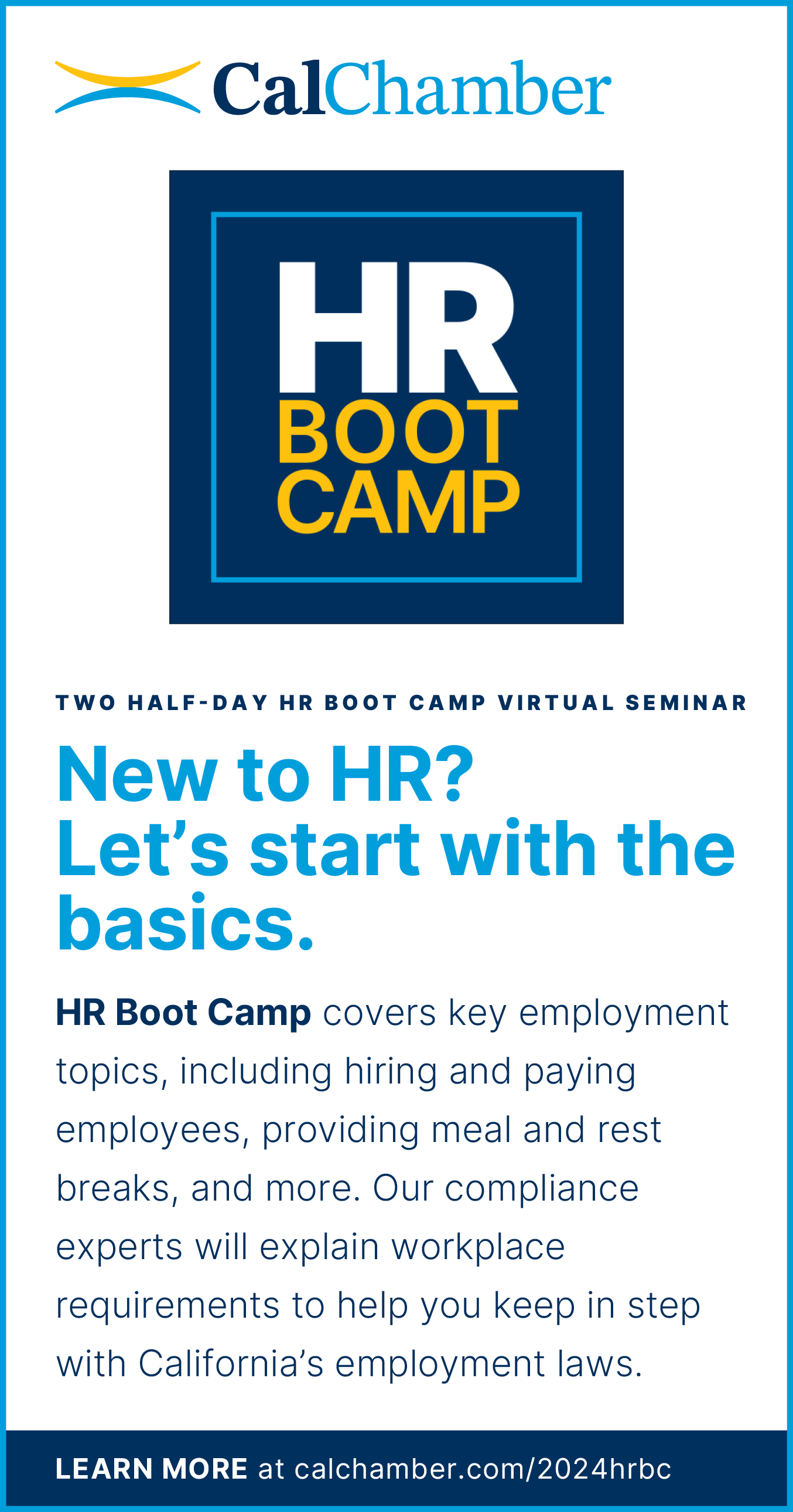 The California Supreme Court this week issued a long-awaited decision on the issue of when an employer must provide “suitable seats” to an employee.
The California Supreme Court this week issued a long-awaited decision on the issue of when an employer must provide “suitable seats” to an employee.
The court’s April 4 decision sought to find a middle ground between the plaintiffs’ and the defendants’ positions.
Overall, however, the decision will require employers in many industries to do a case-by-case analysis of tasks performed at various locations, such as check-out aisles, to determine if a seat is required at that location.
There is no bright line—“yes, seats are required” or “no, they aren’t.” Instead, employers will need to be ready to defend their decision using the guidelines discussed in this decision.
The California Chamber of Commerce filed a joint friend-of-the-court brief with the U.S. Chamber of Commerce in support of defendant employers.
“The court’s ruling confirms that particular job duties cannot be viewed in isolation, and that an employer’s business judgment, customer service considerations and the physical layout of the workspace are relevant in determining whether an employer will be forced to provide a seat. We are hopeful this will lead to common sense prevailing,” said Katherine Forster of Munger, Tolles & Olson, who, together with Malcolm A. Heinicke, prepared the CalChamber and U.S. Chamber brief in the case.
Background
The majority of California Wage Orders require “suitable seats when the nature of the work reasonably permits the use of seats.” But questions remained on how to apply this requirement, generating numerous class-action lawsuits about whether employers must provide seats to their employees.
The questions before the California Supreme Court arise out of two class-action lawsuits filed in the Ninth Circuit:
• Kilby v. CVS Pharmacy, Inc. involves CVS cashiers who spend almost all of their time ringing up sales at the cash register.
• Henderson v. JPMorgan Chase Bank NA involves bank tellers.
Both positions involve standing for long periods. Because the suitable seating questions have such an enormous impact on California employers, the Ninth Circuit asked the California Supreme Court to decide how it interprets California’s suitable seating requirement.
Three Questions Answered
The California Supreme Court answered the seating questions. Italic type quotes directly from the decision:
Q1: Does the phrase “nature of the work” refer to individual tasks performed throughout the workday, or to the entire range of an employee’s duties performed during a given day or shift?
A1: The “nature of the work” refers to an employee’s tasks performed at a given location for which a right to a suitable seat is claimed, rather than a “holistic” consideration of the entire range of an employee’s duties anywhere on the jobsite during a complete shift. If the tasks being performed at a given location reasonably permit sitting, and provision of a seat would not interfere with performance of any other tasks that may require standing, a seat is called for.
The focus is on the actual work done by any employee at a particular location—such as a cash register or teller window.
The inquiry turns on consideration of the overall job duties performed at the particular location. The employer must consider whether it is feasible for an employee to perform each set of location-specific tasks while sitting.
Factors include the relationship between standing and sitting tasks, the frequency and duration of those tasks with respect to each other, and whether sitting, or the frequency of transitioning between sitting and standing, would unreasonably interfere with other standing tasks or the quality and effectiveness of overall job performance.
Q2: When determining whether the nature of the work “reasonably permits” use of a seat, what factors should courts consider? Specifically, are the following considered relevant factors: an employer’s business judgment; the physical layout of the workplace; and the characteristics of a specific employee?
A2: Whether the nature of the work reasonably permits sitting is a question to be determined objectively based on the totality of the circumstances. An employer’s business judgment and the physical layout of the workplace are relevant but not dispositive factors. The inquiry focuses on the nature of the work, not an individual employee’s characteristics.
Whether relevant tasks at a specific location can be performed while seated or standing is balanced against an assessment of feasibility.
Feasibility includes such factors as:
• Whether providing a seat would unduly interfere with other standing tasks;
• Whether the frequency of transition from sitting to standing may interfere with the work; or
• Whether seated work would impact the quality and effectiveness of overall job performance.
Although an employer’s business judgment is relevant, it does not include a company’s “mere preference” that tasks be performed while standing.
Instead, business judgment is an objective standard taking into account the employer’s reasonable expectations regarding customer service and particular job duties, but also any evidence that would bear on the employer’s view that an objective job duty is best accomplished standing. The objective standard doesn’t allow the employer to arbitrarily define certain jobs as standing ones.
Q3: If an employer has not provided any seat, must a plaintiff prove a suitable seat is available in order to show the employer has violated the seating provision?
A3: The nature of the work aside, if an employer argues there is no suitable seat available, the burden is on the employer to prove unavailability.
In other words, employers who want to be excused from the requirement of providing a seat must show that compliance is infeasible because no suitable seating exists.
Next
The case will now return to the Ninth Circuit to determine the merits of the lawsuits against CVS and JPMorgan Chase Bank.



